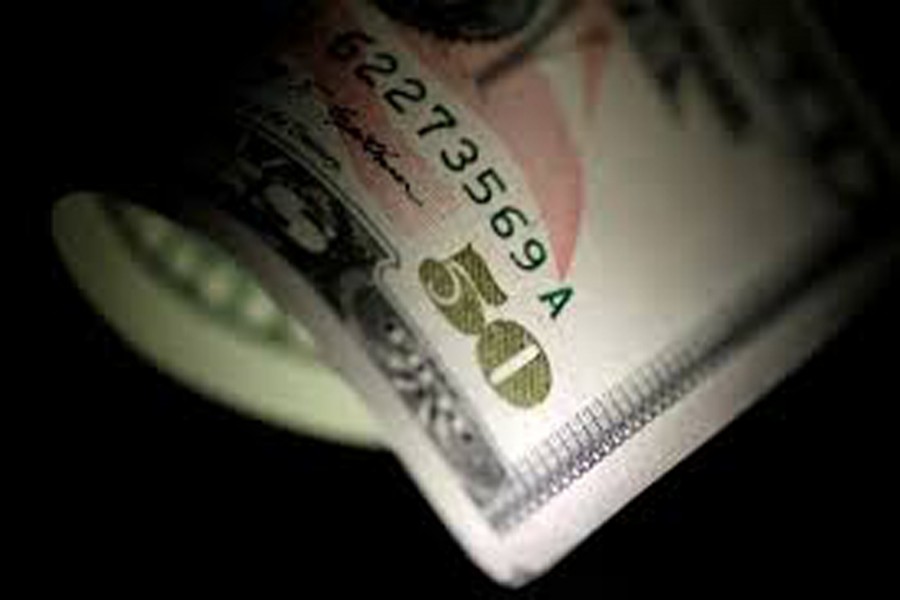The dollar is losing some of its appeal, according to strategists polled by Reuters, who said the US currency’s fortunes have reversed in line with the Federal Reserve taking a dovish turn on rate hikes.
Last year, the dollar outperformed on higher rates and a robust economy. But it had already started turning down before the Fed’s policy U-turn last week on worries that the US-China trade war was putting downward pressure on growth.
The poll of 70 currency strategists taken Jan 31-Feb 6 showed the US dollar is forecast to give up most of 2018’s gains against major currencies over the coming year.
Nearly 80 percent of strategists who answered an additional question said the dollar rally has already stalled, up sharply from over 60 percent one month ago.
The remaining respondents who expect the dollar’s ascent to continue said better US economic performance versus its peers and a reassessment on rates by the Fed will drive the greenback further.
But Fed Chairman Jerome Powell said the case for rate increases had weakened in recent weeks, citing “cross-currents” such as slowing growth overseas and the longest federal government shutdown in history that just ended.
That clearly indicates the Fed will adopt a cautious approach this year following four rate increases in 2018, a view held by a majority of economists in a separate Reuters poll.
“It seems that the 2018 playbook of the dollar strength – US growth outperformance, continued Fed rate hikes, and tighter liquidity conditions from the balance sheet – is reversing,” noted strategists at Morgan Stanley.
“Forward-looking US data such as business and consumer confidence suggest a slowing domestic economy, and the shift in Fed rhetoric suggests that rates will be lower and the balance sheet larger than previously thought. This is a recipe for dollar weakness.”
The latest poll once again predicted most major currencies will strengthen against the dollar in the year ahead.
But any significant gains for other currencies will likely be limited. A synchronized global economic slowdown is already under way, keeping major central banks on the sidelines.
“This is probably as good as it is likely to get for the dollar,” said Lee Hardman, currency strategist at MUFG, adding: “the Fed has become more dovish than we had anticipated more quickly and has increased the risks that the dollar may weaken more notably.”
“But the other side of the coin is the story outside of the US - the fundamentals are still weak and it is difficult to find currencies to stop the dollar at this point in time.”
Speculators increased their bets in favor of the greenback to the highest since December 2015 in the last week of 2018 - the most recent data - according to data from the Commodity Futures Trading Commission, suggesting a long-dollar position is a crowded trade.
But all is not well on the other side of that trade.
Euro zone growth has also slowed sharply and is likely to restrain the European Central Bank - which only just stopped buying billions of euros worth of bonds each month - from lifting interest rates off the floor any time soon.
“Maybe we will see a recovery in euro zone growth this year, but economic data is just not supportive of that. Right now, it is difficult to be bullish on the euro,” said Jane Foley, senior FX strategist at Rabobank.
The euro was at best forecast to claw back its around 5 percent losses against the dollar since the start of last year. The single currency was forecast to trade around $1.20 in a year from about $1.14 on Wednesday.
“When everything else is looking a bit bearish, why sell the dollar?” asked Foley. “If you are going to sell the dollar, then you’ve got to buy something else - what will you buy in an environment where global growth is slowing and the outlook for other currencies is potentially worse.”
Sterling’s path will largely be dependent on how Britain’s departure from the European Union pans out.
But it is clear the main beneficiaries are beaten-down emerging market currencies. Most have bounced back smartly this year as a decisively dovish Fed has provided the impetus.
“Currencies in emerging markets are undervalued and should benefit from a shift in the Fed’s rhetoric,” said Petr Krpata, chief EMEA FX and interest rate strategist at ING.
Currencies usually sensitive to commodity prices may also do well.
“No longer does it appear that central banks will be trying to put the brakes on,” said Greg Anderson, global head of foreign exchange strategy at BMO Capital Markets in New York. “It is a double positive for commodity-linked currencies.”


